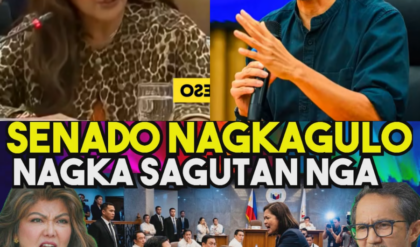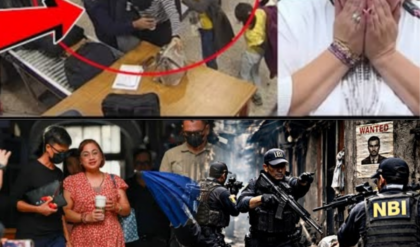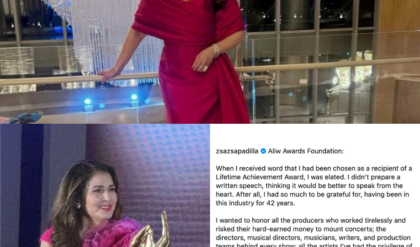The political firestorm that engulfed the Department of Public Works and Highways (DPWH) has finally cleared, revealing a crucial distinction between political spectacle and factual reality. For days, the heated public feud between freshman lawmaker Congressman Leandro Leviste and DPWH Secretary Vince Dion dominated headlines, fueled by Leviste’s explosive accusations of corruption. However, Secretary Dion’s calculated response has not only addressed the claims but has also effectively highlighted the agency’s unprecedented commitment to systemic reform, suggesting the congressman may have rushed his judgment.
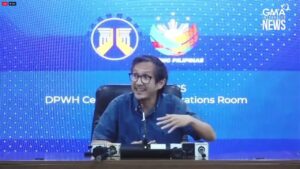
The Spark: Unverified Allegations of Corruption
The controversy began when Congressman Leviste, early in his term, took aim at the DPWH, alleging suspicious ties between department officials and contractors. His accusations, while bold, were largely based on circumstantial evidence.
Leviste pointed specifically to the resignation of former DPWH Undersecretary Aray Perez, claiming the timing—just one day after the congressman proposed a background check on department officials—was too convenient to be a coincidence. Further cementing his claims, he highlighted a widely circulated photo of a DPWH official meeting with businessmen at a restaurant, presenting it as definitive proof of wrongdoing. To a public weary of government corruption, the narrative was immediately compelling.
Secretary Dion’s Measured Rebuttal: Meetings Are Business
When Secretary Vince Dion finally broke his silence, his response was firm, calm, and aimed directly at dismantling the underlying premise of Leviste’s claims.
“Yes,” Dion confirmed, “my officials meet with contractors. That’s part of their job.”
Dion emphasized that for any government infrastructure agency, regular consultation with contractors is not only normal but essential for project management and execution. He questioned the logical basis of the accusation: “How can we bid or supervise infrastructure work without speaking to them?”
The Secretary stressed that the meetings in question were solely for official business, not illicit deals. He noted that the agency now operates with a high degree of transparency, making any suggestion of secretive dealings largely unfounded.
In fact, Dion’s tenure has been defined by an aggressive anti-corruption campaign. Since taking office, he has initiated a significant “housecleaning” effort, which included firing high-ranking officials with known corruption records and suspending numerous engineers, accountants, and architects linked to anomalies. He also launched an ongoing internal review across all district offices. As one insider noted, “Secretary Dion is the first in years to aggressively shake up the DPWH. He’s serious about reforms.”
The Red Herring: Deconstructing the Viral Photo
The infamous restaurant photo—cited by Leviste as “proof” of corruption—was quickly revealed to be a red herring.
“Yes, that meeting happened,” Dion confirmed, “but it was an official business meeting. There’s a huge difference between a working lunch and an illegal transaction.”
The DPWH’s internal audit later backed this up, confirming no evidence of wrongdoing. The officials were merely conducting project coordination meetings, a standard and necessary procedure for large-scale infrastructure projects. As a DPWH engineer remarked off-camera: “Are we supposed to discuss project plans with the walls? Of course, we meet contractors. That’s how work gets done.”
Digital Defense: Introducing Blockchain for Transparency
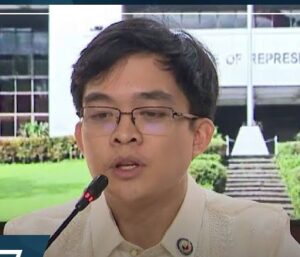
To prove his commitment to eliminating corruption loopholes, Secretary Dion made a major reveal: the DPWH is actively adopting blockchain technology. This digital ledger system is designed to provide full and permanent transparency of all financial transactions and project funding within the agency.
“Once blockchain is in place,” Dion explained, “no one can manipulate data. The public, journalists, and even Congress will be able to see where funds go—in real time.”
This initiative directly tackles the very structural corruption that has plagued the agency for decades. Dion challenged his critics by stating that the technology will instantly expose any instance of fraud.
Leviste’s Valid Points, But Premature Claims
In his counterpoint, Congressman Leviste called on the Secretary to: 1) Disclose all DPWH officials’ connections with contractors; 2) Ensure a price reduction of at least 25% in public works projects; and 3) Release the budget per legislative district for public scrutiny.
While these proposals are valid, critics were quick to point out that Dion is already actively working on these exact reforms. Transparency and cost reduction are the central goals behind the blockchain implementation. The general consensus among political analysts is that the congressman’s sensational claims were either premature or based on partial information, potentially received from elements within the DPWH who seek to undermine Dion’s cleanup efforts.
The Final Word: Accuracy Over Attention
This controversy ultimately underscores the ongoing and difficult struggle to clean up the DPWH. Secretary Dion’s strategy is not to deny the agency’s history of corruption, but to systematically dismantle the old system through aggressive enforcement and the implementation of revolutionary digital auditing technology.
For Congressman Leviste, the episode serves as a powerful reminder that accuracy matters more than attention in political advocacy. While his passion for reform is commendable, releasing unverified information risks eroding his own credibility and distracting from the very reforms the agency is currently enacting.
As Secretary Dion stated, “We’re not perfect, but we’re getting there. If anyone in my team is caught taking money or colluding with contractors, they’ll be removed and prosecuted—no exceptions.” It is a promise that the Filipino public is ready to hold him to.
